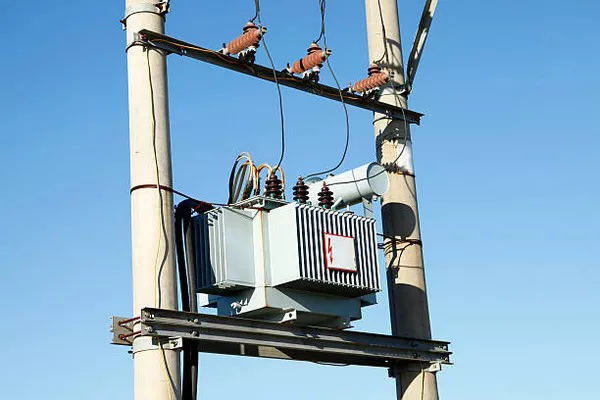Power transformers are fundamental devices within the realm of electrical engineering and energy distribution. These remarkable machines play a pivotal role in transmitting electricity efficiently and reliably from power plants to homes, businesses, and industries across the globe. In this article, we will explore the intricacies of power transformers, delving into their design, operation, significance, and impact on our daily lives.
The Basics of Power Transformers
A power transformer is an electromagnetic device designed to transfer electrical energy between two or more circuits through electromagnetic induction. It is a static device that operates without any moving parts, making it highly reliable and efficient. At its core, a power transformer consists of a primary winding, a secondary winding, and a magnetic core.
Primary Winding: This is the coil connected to the source of electrical power, typically a high-voltage source. When AC voltage is applied to the primary winding, it generates a magnetic field.
Secondary Winding: This is another coil, electrically isolated from the primary winding, designed to receive electrical energy. The voltage in the secondary winding is either higher or lower than that in the primary winding, depending on the transformer’s design.
Magnetic Core: The core is usually made of laminated iron or steel sheets. Its primary function is to enhance the magnetic coupling between the primary and secondary windings, facilitating the transfer of electrical energy.
How Power Transformers Work
Power transformers operate on the principles of electromagnetic induction. When an alternating current (AC) voltage is applied to the primary winding, it generates a changing magnetic field around the coil. This varying magnetic field induces a voltage in the secondary winding according to Faraday’s law of electromagnetic induction. The induced voltage in the secondary winding can be higher or lower than the primary voltage based on the turns ratio of the transformer.
The turns ratio, denoted as “Np/Ns,” represents the ratio of the number of turns in the primary winding (Np) to the number of turns in the secondary winding (Ns). If Np is greater than Ns, the transformer is called a step-down transformer, as it reduces the voltage from the primary to the secondary side. Conversely, if Np is less than Ns, it’s a step-up transformer, which increases the voltage from primary to secondary.
Significance of Power Transformers
Power transformers play an indispensable role in the modern electrical grid and power distribution networks. Their significance can be summarized as follows:
Voltage Transformation: Power transformers enable the transmission of electricity over long distances by stepping up the voltage at the generation side, reducing losses during transmission, and then stepping down the voltage at the distribution side for safe use.
Electrical Isolation: Transformers provide electrical isolation between the primary and secondary circuits, ensuring safety and preventing unwanted electrical interactions.
Load Balancing: Transformers help balance the load in electrical networks, ensuring that power is distributed evenly to consumers.
Voltage Regulation: They contribute to voltage regulation, stabilizing the voltage levels in the grid and ensuring consistent power quality.
Grid Reliability: Transformers enhance grid reliability by providing backup power in case of system failures or emergencies.
Integration of Renewable Energy: As renewable energy sources like wind and solar power become more prevalent, transformers play a critical role in integrating these intermittent sources into the grid.
Types of Power Transformers
Power transformers come in various types, each designed for specific applications:
Distribution Transformers: These transformers are commonly found in residential and commercial areas and are responsible for reducing the high voltage from power lines to levels suitable for local consumption.
Power Substation Transformers: These large transformers are located in electrical substations and are responsible for stepping up or stepping down voltages for long-distance transmission or local distribution.
Instrument Transformers: These transformers are used for measuring current and voltage in high-voltage circuits and are commonly found in substations and power plants.
Auto Transformers: Auto transformers have a single winding with taps at various points, allowing them to provide a range of voltage transformations and voltage stabilization.
Step-up and Step-down Transformers: As previously mentioned, these transformers are specifically designed to either increase or decrease voltage levels.
Three-Phase Transformers: These transformers are used in three-phase electrical systems, which are prevalent in industrial settings.
Efficiency and Environmental Impact
Efficiency is a crucial aspect of power transformers as it directly affects energy conservation and environmental impact. Modern power transformers are designed with efficiency in mind to minimize energy losses during the transformation process. The core materials, such as amorphous metals, and improved winding designs contribute to higher efficiency levels.
Efficiency is typically measured as a percentage and varies depending on the transformer’s load. Transformers operate most efficiently at or near their rated capacity. At partial loads, efficiency may decrease slightly due to factors like core and copper losses.
Minimizing energy losses in transformers is not only economically beneficial but also environmentally responsible. Lower energy losses mean reduced greenhouse gas emissions and less energy wasted, which aligns with global efforts to combat climate change and promote sustainability.
Conclusion
Power transformers are the unsung heroes of our electrical infrastructure, silently ensuring the reliable and efficient distribution of electricity to our homes, businesses, and industries. Understanding their fundamental principles, significance, and various types is essential in appreciating their role in powering our modern world.
As we continue to advance technologically and shift toward cleaner energy sources, power transformers will remain an integral part of our electrical grids. Their evolution toward greater efficiency and sustainability reflects our commitment to building a more resilient and environmentally friendly energy infrastructure. In an increasingly electrified world, power transformers will continue to be at the heart of our electrical systems, enabling progress and prosperity for generations to come.

